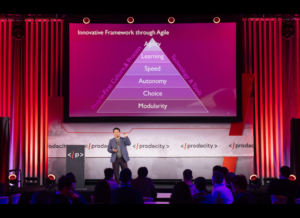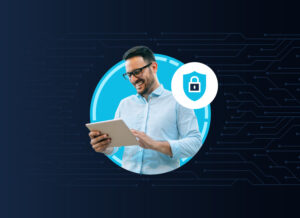Modernizing IT is a priority for all levels of government. Despite its importance, a recent National Association of State Technology Directors study found only 50% of the 38 states surveyed have “budget mechanisms for specifically addressing IT modernization.” At the same time, 84% reported they had increased cloud services—and 76% increased their network infrastructure and bandwidth—because of the pandemic. To put it mildly, growing and scaling services without a budget isn’t ideal. However, building economic efficiencies into an increasingly complex, sophisticated IT environment is possible.
One way to approach cost containment is to build it into the approach taken when developing cloud-native applications and instilling the management of these applications with this mindset. This will likely pose challenges—developers are rarely responsible for the decisions about how their apps are implemented, used, or scaled. Likewise, those responsible for making decisions about infrastructure resources, maintenance, and operations may not understand or account for how much it costs to keep these cloud-native apps going. Here’s a look at how developers and operations management teams can better understand and manage the cost of application modernization programs:
 The Relationship Between Cost Containment and the Modern Developer
The Relationship Between Cost Containment and the Modern Developer
The application development phase offers an opportunity to lay the foundation for cost containment and is a vital part of developer maturity.
An easy way to move toward cost-effective, sustainable applications is to adopt the underpinning of reliable operations—monitoring and observability. When developers ensure new and modernized applications include monitoring from the outset, DevOps and site reliability engineering (SRE) teams can better understand the state of their systems and proactively debug systems in production. This benefits the organizations who own these applications in the long run.
Here’s an example: suppose an application relies on platform-managed serverless or orchestrated containerization. There’s no shortage of opportunities to provide rich performance data for both developers and operations using commercial cloud-native or open-source monitoring options.
Through monitoring, developers can quickly get a sense of application durability and develop more sustainable applications to support cost containment. Considering sustainable cost containment during the dev phase isn’t best left to IT leaders; agency leaders will greatly appreciate the developer who builds the foundation into their apps.
Keys to Containing Cost
It’s also crucial to address agency leaders’ responsibility for ensuring the high performance of cloud-native applications once deployed. As much as we’d like them to, cloud-enabled technologies don’t maintain a minimum latency or uptime on their own. IT and network operations teams continuously monitor the health of cloud applications, infrastructure, and the networks they rely on to ensure a quality user experience and an uninterrupted mission.
They need full-stack observability without added costs for procuring and managing multiple monitoring tools and accommodating new reporting, alerting, and automation needs as time progresses. IT leaders can control costs in a cloud-native future by ensuring their developers and IT operations teams utilize the same centralized and automated monitoring tools—from launch to sunset.
By consolidating tools and achieving observability across services and agencies from a single integrated pane of glass, these teams can occupy the same monitoring domain and ensure peak performance of the entire application, infrastructure, and network environment while saving time and containing costs.
The cost-containment advantages of automation also can’t be overstated. Instead of IT pros spending hours trying to identify, diagnose, and fix hard-to-find performance issues, modern monitoring tools run in the background, automatically identifying performance issues and recommending optimization fixes.
As new systems and cloud-native applications come online, these systems allow agencies to quickly and easily scale their monitoring capabilities without additional expense, no matter how complex their cloud, multicloud, or hybrid environment becomes.
The results? A pathway for states without the budget for cloud and IT modernization to create economic efficiencies.
To learn more about SolarWinds’ observability platform, click here.







